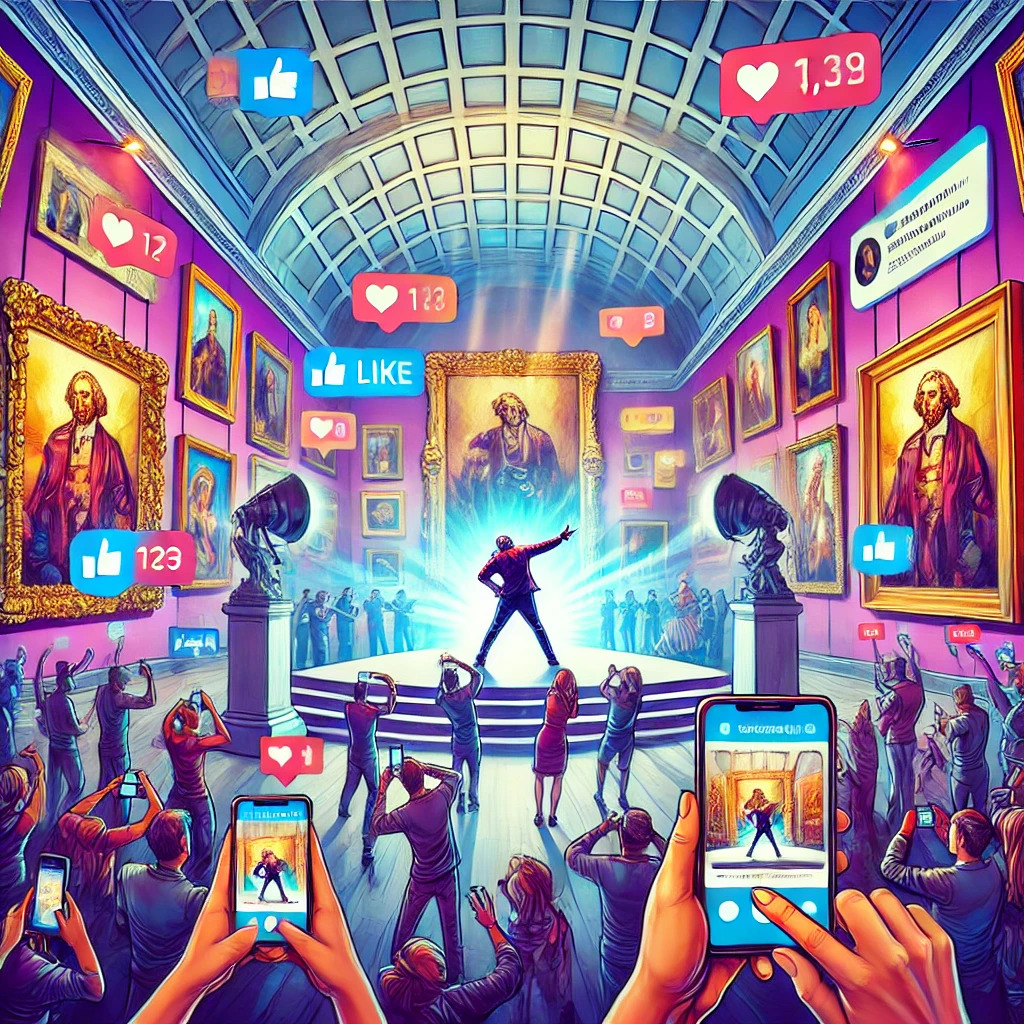In the contemporary art world, performance art has evolved significantly, particularly with the influence of social media. This article delves into the impact of social media on performance art, examining how platforms like Instagram shape and sometimes distort our perception of dynamic art pieces. We explore the nuances of this relationship, the implications for artists, and the broader cultural context.
The Rise of Performance Art on Social Media
Performance art, traditionally experienced in person, has found a new stage on social media. Platforms like Instagram have become pivotal in how we consume and understand this art form. Performance pieces, often ephemeral and context-specific, are now distilled into brief, visually engaging snippets that cater to the fleeting attention spans of online audiences.
Social Media’s Influence on Art Consumption
Social media platforms, with their emphasis on visual content, have transformed the way art is shared and consumed. Performance art, with its inherently visual and dynamic nature, is particularly suited to this medium. However, this shift also means that the nuances and deeper meanings of these performances can be lost in translation. What remains are often the most sensational and visually striking moments, creating a fragmented understanding of the art.
Göksu Kunak’s “VENUS”: A Case Study
Göksu Kunak’s performance piece “VENUS,” held at Berlin’s Neue Nationalgalerie, exemplifies the dual-edged nature of social media’s impact on performance art. The work, which involved various tableaux vivants and politically charged monologues, was widely shared on Instagram. However, the full scope and intention of the piece were often lost in the snippets that circulated online.
The Performance
Kunak’s “VENUS” began with the artist moving under strobe lights, surrounded by a sea of spectators documenting the event on their phones. The performance included striking visual elements such as Kunak in shimmering attire alongside a bodybuilder and various dramatic poses and interactions. These moments, captured and shared on Instagram, created a fragmented and superficial impression of the piece.
The Lost Message
While the visual elements of “VENUS” garnered significant attention online, the more profound aspects of the performance, such as a reading of a collage of Islamophobic, racist, and xenophobic sentences, were largely overlooked. This omission highlights a critical issue with social media’s role in art consumption: the tendency to prioritize the visually compelling over the substantively meaningful.
The Feedback Loop: Social Media and Art Creation
The relationship between social media and performance art is not one-sided. As artists become more aware of the demands and trends of social media, their work increasingly reflects these influences. This feedback loop can lead to a homogenization of art, where pieces are designed to be “Instagrammable” rather than deeply engaging.
The Impact on Aesthetics
Artists, galleries, and museums are adapting to the realities of social media. Live events and performances are becoming more prevalent in programming, driven by the desire to create content that resonates on platforms like Instagram. This shift has aesthetic implications, pushing performance art towards styles and themes that align with the viral logic of social media.
The Risk of Superficiality
While social media can bring greater visibility to performance art, there is a risk that the medium’s limitations lead to a superficial engagement with the art. The focus on creating content that is easily consumable in short clips can overshadow the more complex and nuanced elements of performance art, potentially leading to a dilution of its impact.
The Paradox of Authenticity
In an environment where virality often dictates success, artists face the challenge of maintaining authenticity while also catering to the demands of social media. Performance art, with its emphasis on live, unmediated experiences, is uniquely positioned to push back against the flattening logic of the digital age.
Rawness and Intimacy
Many contemporary performance artists embrace rawness, body candor, and intense intimacy as a way to counteract the superficiality of social media. The Young Boy Dancing Group, for example, incorporates provocative elements like candles and wax in their performances, emphasizing kinship and trust. These performances, though often sensationalized online, retain a core of authenticity that resonates deeply with live audiences.
The Role of Improvisation
Improvisation in performance art serves as a form of resistance to the algorithmic precision of social media. It introduces an element of unpredictability and human imperfection that defies the polished and curated nature of online content. This authenticity test is crucial in maintaining the integrity of performance art in the digital age.
The Future of Performance Art in the Social Media Era
As we move further into the digital era, the relationship between performance art and social media will continue to evolve. Artists must navigate the pressures of creating work that is both true to their vision and suitable for online consumption.
Balancing Act
The key challenge for performance artists is to strike a balance between creating visually compelling content that performs well on social media and preserving the depth and complexity of their work. This balancing act requires a strategic approach to both the creation and documentation of performances.
Embracing New Formats
Some artists are experimenting with new formats and technologies to enhance their performance art. Virtual reality (VR) and augmented reality (AR) offer exciting possibilities for creating immersive and interactive experiences that can be shared online without losing the essence of the live performance.
Monet est-il passé ?
Performance art, shaped and sometimes constrained by social media, is at a crossroads. The medium offers unprecedented opportunities for visibility and engagement but also poses significant challenges. As artists and audiences navigate this new landscape, it is crucial to remain mindful of what is gained and what is lost in the translation from live performance to digital content. By fostering a deeper understanding and appreciation of performance art in all its forms, we can ensure that this dynamic art form continues to thrive in the digital age.
This comprehensive exploration highlights the intricate relationship between performance art and social media, emphasizing both the opportunities and challenges that lie ahead.



Leave a Reply
You must be logged in to post a comment.